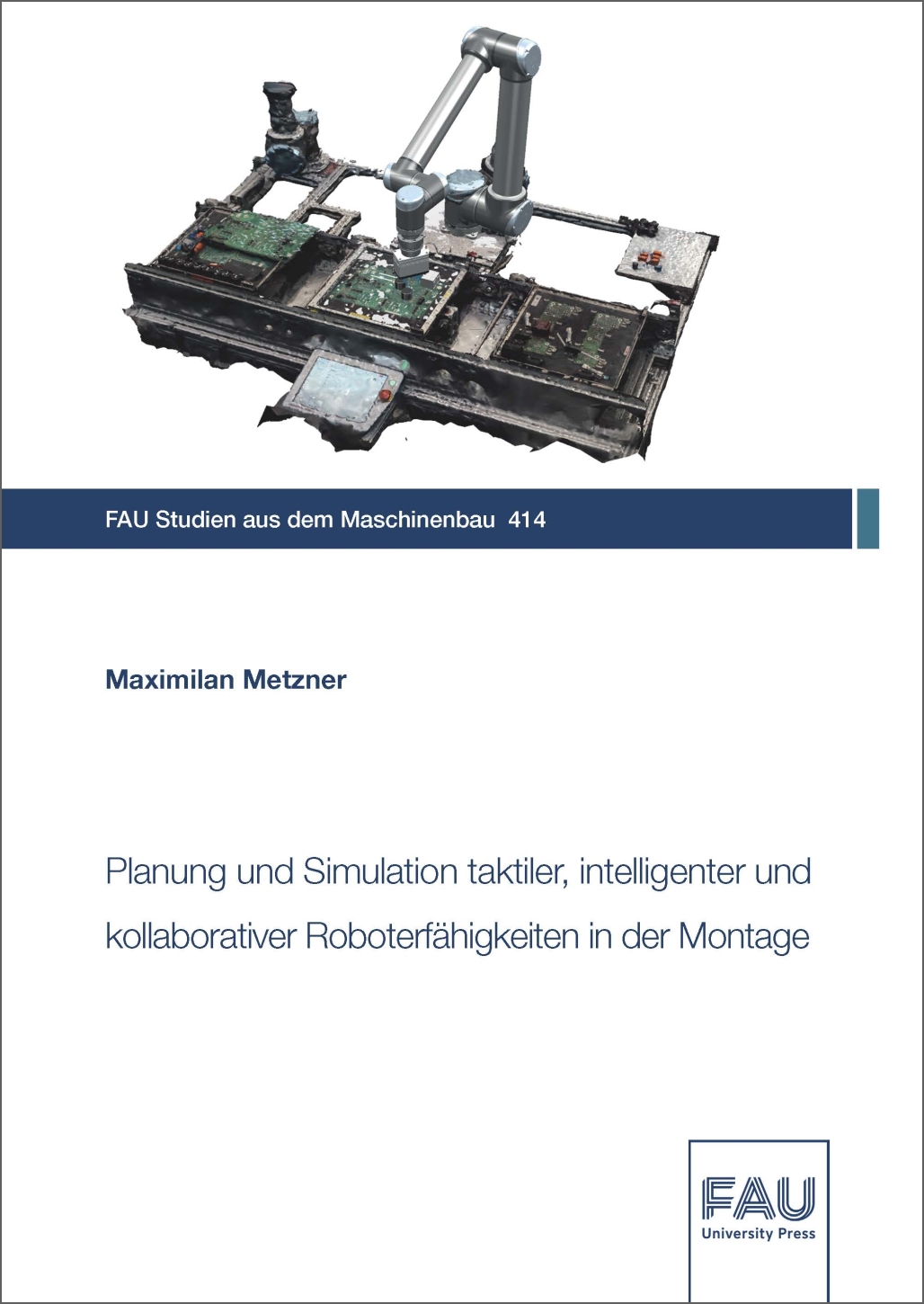Description
The robot-based automation of manual tasks in assembly requires the imitation of human skills by the technical system. Three skills - tactile assembly, defined handling of unsorted material and cooperation between humans and robots - are identified as central enablers of further automation. Although technological equivalents for these capabilities already exist in automation technology, industrial application is not yet widespread. The goal of increasing industrial applicability is pursued in this dissertation by defining and implementing real-world applicable planning and simulation methods. It is shown that these adapted methods allow an efficient implementation and reliable prediction of the later behaviour of such systems. The methods are evaluated on real scenarios from electronics production.


Reviews
There are no reviews yet.